Werrej

The sculpin belongs to freshwater fish species, so it can be found in rivers and lakes with fresh and fairly clean water enriched with oxygen. In addition, this fish is found in small streams, characterized by a rocky or gravel bottom. In appearance, the sculpin is similar to a goby, but at the same time it is small in size.
General information about fish
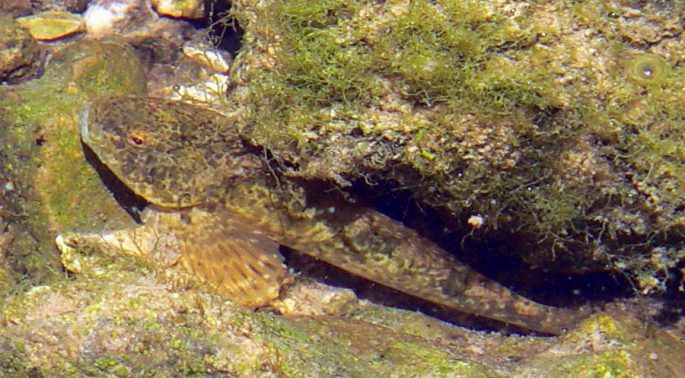
This small fish is also called a broad-browed or sculpin goby. This unique fish belongs to the species of ray-finned fish, representing the slingshot family. Due to its appearance, the bullhead is confused with the common goby, although in fact they are extremely different fish.
At the same time, it should be noted that there are several subspecies of sculpins, such as:
- Spotted stalker.
- Siberian stalker.
- Sandy broadhead.
- Chersky’s stalker.
- Sakhalin stalker.
- Amur sculpin.
- Slimy stalker.
This fish grows quite slowly, reaching a length of no more than 3 centimeters after 5 years of life, with a mass of several grams. Life expectancy is about 10 years.
Dehra
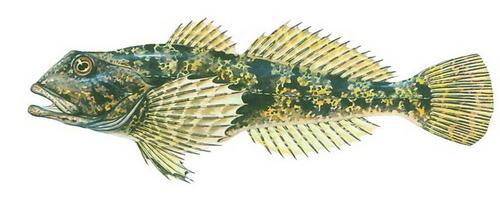
It can grow up to 20 centimeters long. It has a relatively large head, which is somewhat wider than the body itself. It is distinguished by a large mouth and massive lips, as well as large eyes, with a red tint. There are no scales on the body, but small, but rather sharp spikes are placed all over the body to protect against enemies. In this regard, few predators dare to feast on such prickly prey.
It has elongated pectoral fins covered with small dark spots. In the area of the gills there are protective shields covered with the same prickly spines. The back of the bullhead is painted gray-yellow with brown spots and stripes. This allows the fish to remain unnoticed against the background of stones, which is an effective defense against its natural enemies.
Ħabitat
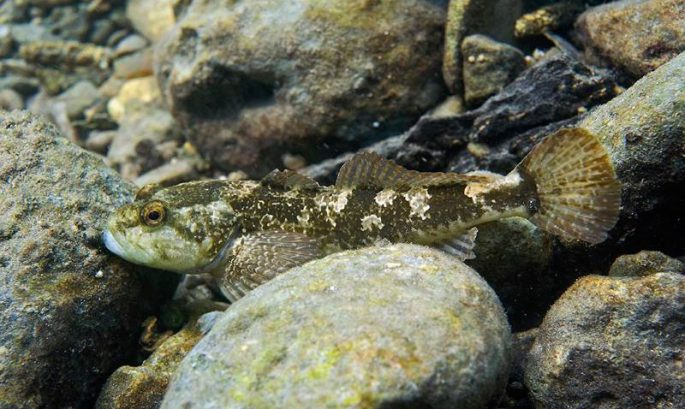
This small fish inhabits the fresh waters of Europe, Asia and North America, which are located at a height of several meters above sea level. At the same time, only reservoirs with clean water and a high concentration of oxygen are suitable for the habitation of the sculpin. It is more suitable for areas with a rocky bottom, where it is perfectly camouflaged due to its unique coloration.
Ħajja

This small fish is found within sea bays, where fresh water prevails. Can live in small rivers, with a rocky bottom. Leads, as a rule, a solitary lifestyle. Prefers to stick to permanent habitats, not moving long distances.
In the daytime, it hides among the placers of stones, from which it received its name as a sculpin. After dark, the fish leaves its hiding place and goes hunting in search of food. It is almost impossible to notice a fish in the water, because it has the corresponding color, merging with the color of the bottom. This fish is considered to be rather lazy, because it swims a little, being practically immobile. At the same time, when she is in danger, she can quickly move, although not far, to the limits of the nearest shelter. The sculpin is included in the diet of trout.
Usually, within the reservoir, this fish can be found in the area of rifts, in shallow areas. During spawning periods, it rather fiercely protects its living space and offspring.
Riproduzzjoni
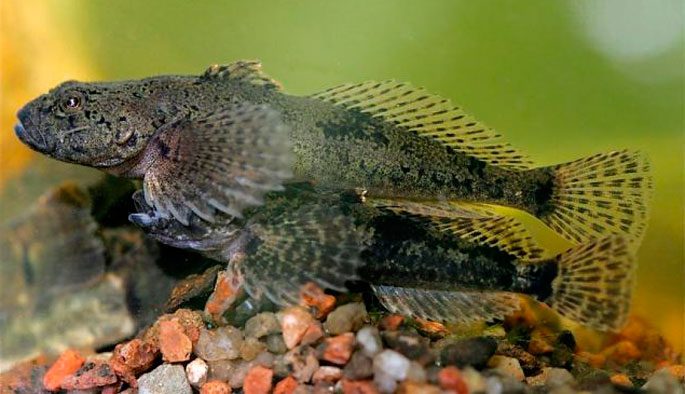
Somewhere in the 4th or 5th year of life, the sculpin can already spawn. At the same time, females are much smaller than males, which leads to great competition among males.
Depending on the nature of the reservoir and its geographical location, the spawning period takes place in late April or early May.
Before the spawning process, each male prepares a place by digging a small hole for the female to lay her eggs in. At the same time, males actively protect their territory from unwanted guests. As a rule, during this period, you can observe whole “fights” between males, both for territory and for females.
At one time, the female lays no more than 3 hundred eggs. At the same time, the eggs are distinguished by a yellowish-pink tint and relatively large sizes.
During the spawning period, the female can make several clutches, in the prepared pits of different males, after which, the males actively protect the clutch until the fry appear. After 3-4 weeks, fry may appear, although much depends on temperature conditions. The female lays her eggs under a stone, gluing it to it. After that, the male takes care of them, removing dust, dirt and debris, constantly fanning them with his fins.
What does a stalker eat
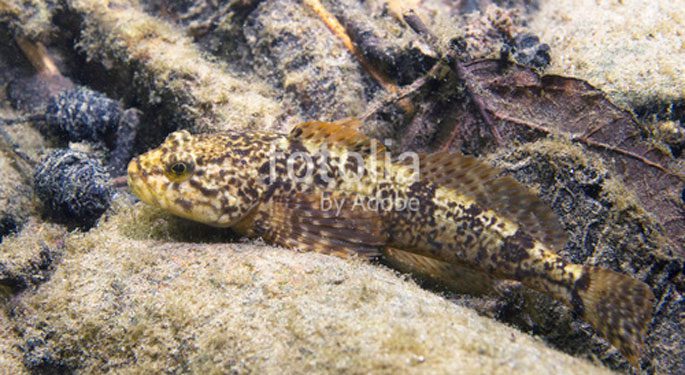
The food of this fish is very diverse, so it prefers:
- Larva tal-ħanfusa.
- Kavjar ta' ħut ieħor.
- Frog caviar.
- Tadpoles.
- Fry of other fish.
- Dragonfly larvae.
The sculpin prefers fry of fish such as minnow, trout or stickleback. At the same time, it is considered an excellent and intelligent hunter. Before catching prey, this fish additionally disguises itself. She sinks to the bottom and raises the turbidity, which falls on the sculpin and additionally masks it. When it detects potential prey, it rushes at it and swallows it in an instant.
Economic importance of fish
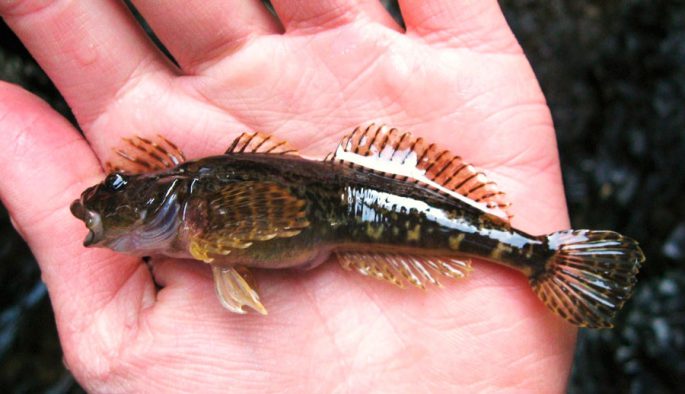
People do not eat the common sculpin, because the fish is small in size, and its meat is not tasty. But in nature, the common sculpin plays a very important role in the nutrition of such predatory fish as:
- Pike.
- Perċa.
- Nalim.
- Tweġiba.
In addition, some animals feed on this fish, such as otters, minks, mergansers and dippers.
At the same time, the sculpin is common in the northern part of Russia.
Special status of the common sculpin
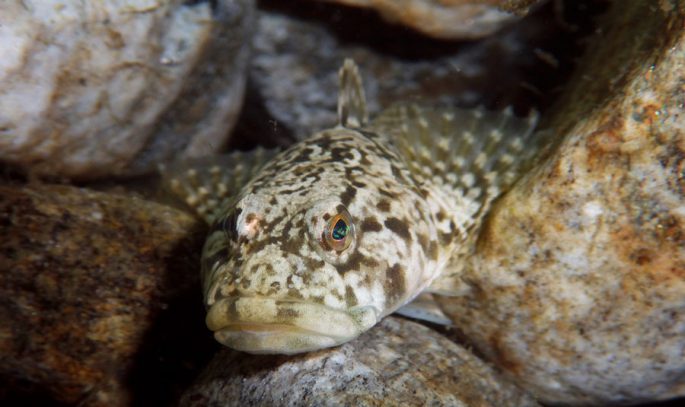
This type of fish, which prefers clean waters with a high content of oxygen, does not adapt well to heat and water pollution. Due to the fact that the rivers are polluted at a high rate, the number of sculpin is also decreasing. Considering that this fish plays a huge role in the food chain of many fish species, one can only imagine how serious the extinction of this fish can be.
When the ambient temperature rises, the sculpin leaves or disappears from many reservoirs. The population of this unique fish is restored very slowly, over several seasons. In this regard, this fish is listed in the Red Book of Russia and classified as a rare species of fish.
Despite some facts, sometimes amateur anglers catch this fish. Due to its amazing coloration, the common sculpin is difficult to spot against the background of the bottom. He can rightfully be called a master of disguise, which often saves his life. But due to the fact that the reservoirs are constantly polluted, and the water temperature rises above the norm, the sculpin constantly disappears from many reservoirs.
Knife podkamenschik, river Kama









